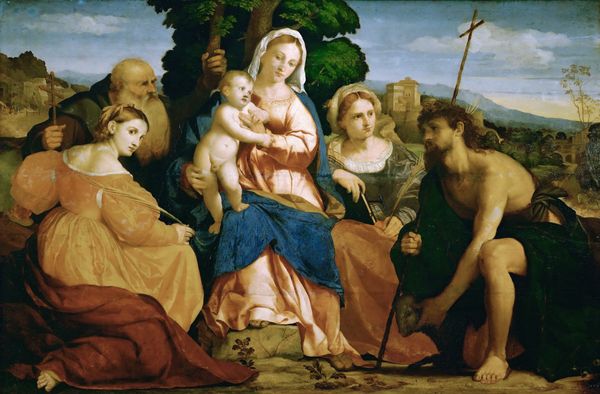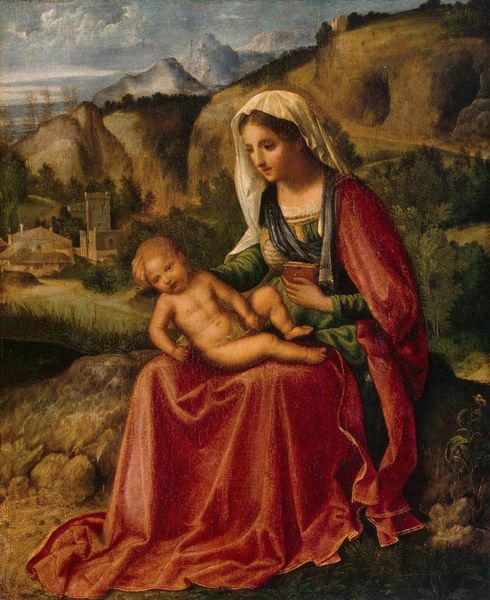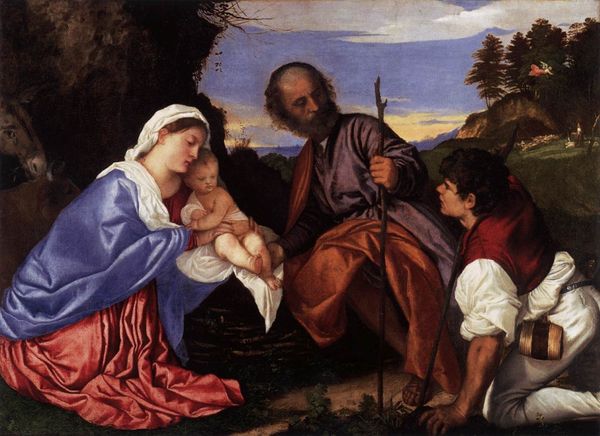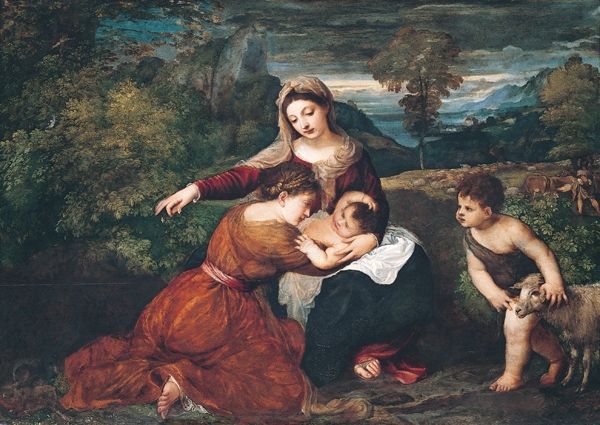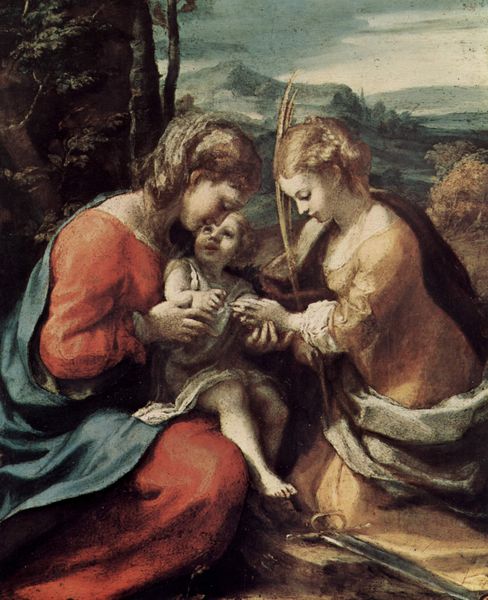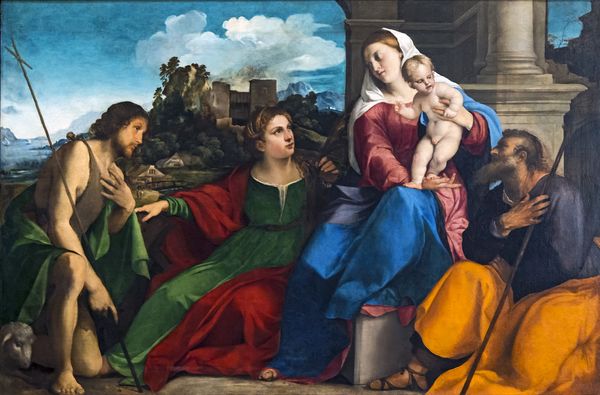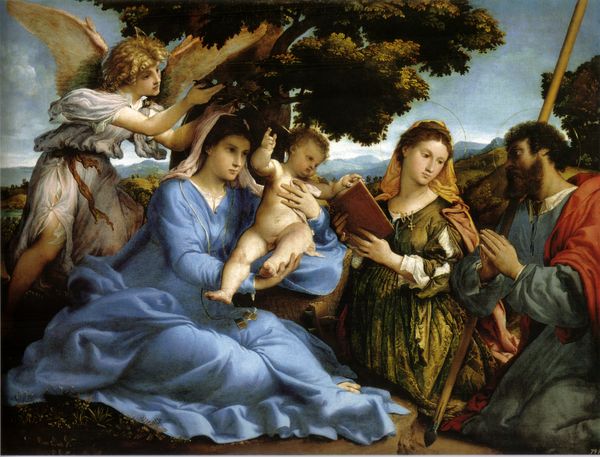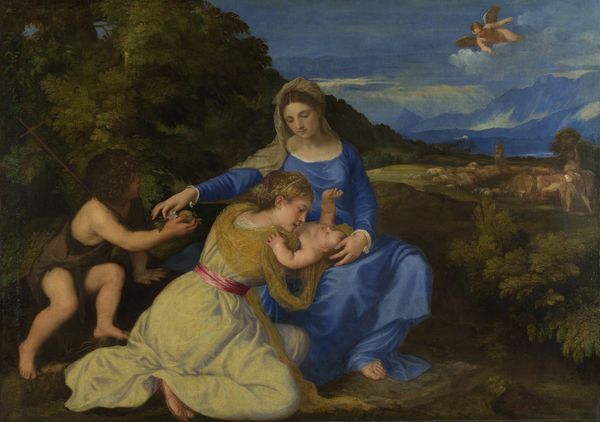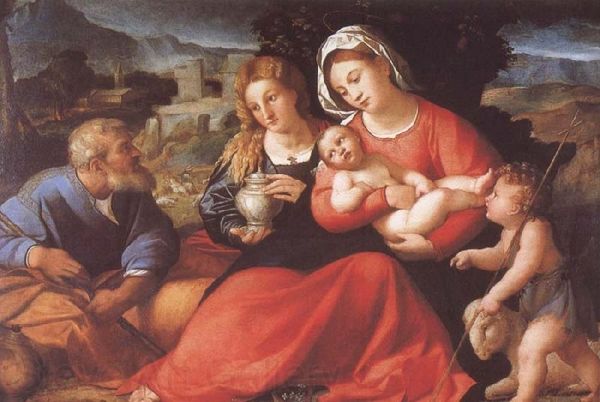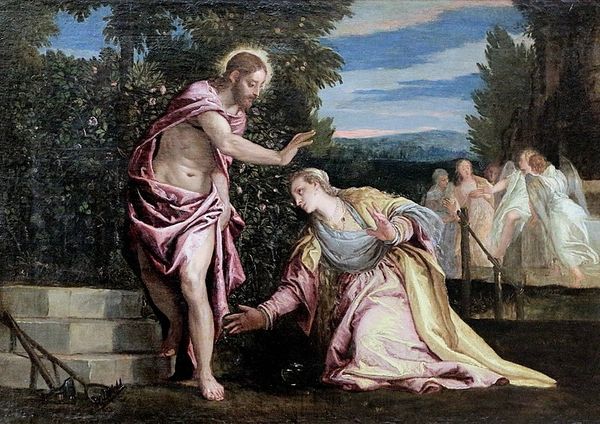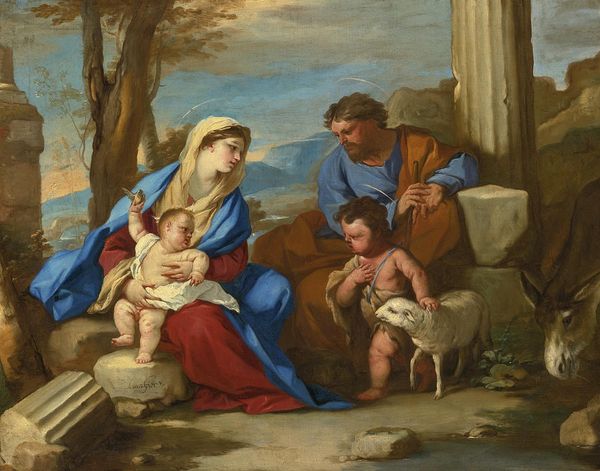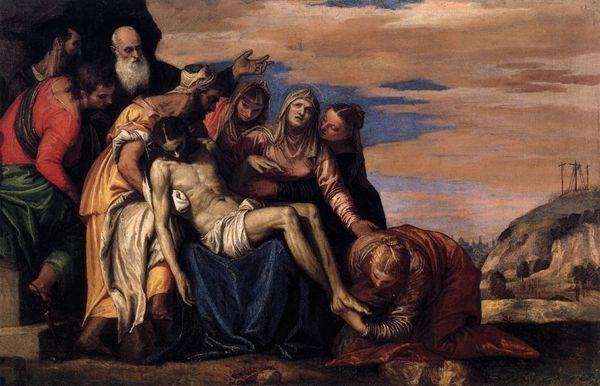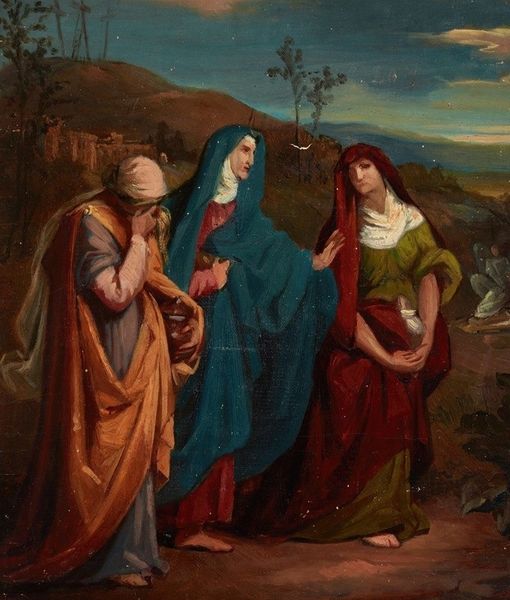
oil-paint
#
portrait
#
venetian-painting
#
animal
#
oil-paint
#
figuration
#
oil painting
#
child
#
christianity
#
history-painting
#
italian-renaissance
#
christ
Dimensions: 71.5 x 25 cm
Copyright: Public domain
Curator: "Madonna and Child with St. Catherine and a Rabbit," painted around 1530 by the Venetian master, Titian. It’s now hanging in the Louvre, if you ever want to see it in person. Editor: My first impression? Golden light, a hushed sense of peace. Almost too perfect. It's like a daydream. But is it genuine or constructed? Curator: Well, Titian was all about creating a certain… idealized version of reality. Think about the Venetian High Renaissance fascination with beauty, earthly and divine. The painting isn't simply a devotional image; it's also about displaying wealth, status, and a sophisticated understanding of classical ideals. Editor: The rabbit is such a bizarre element. Is it purely symbolic of fertility and innocence, or does it ground the work in something more earthly? There’s that slightly mischievous look it has, peering right back at us… Curator: Both, I think. The rabbit traditionally symbolizes purity and the Virgin Mary, but its inclusion also reflects a growing interest in naturalism during the Renaissance. Remember, wealthy patrons kept animals as pets and status symbols. Showing them in portraits, even religious ones, was a sign of the times. It humanizes the holy figures, places them in a relatable, tangible world. Editor: And St. Catherine? What role does she play? It's almost as if she's presenting the Christ Child to us. Or is she there as a witness to the Virgin's perfection? Curator: Catherine's presence allows Titian to explore a specific kind of feminine beauty - the almost stern goddess. She's acting, you see, as a kind of intermediary between the divine and the viewer, emphasizing Mary's central role within Christian theology, and her own devout understanding. This painting would have been made in order to demonstrate power and position of an elevated person with refined tastes. Editor: I’m drawn to the subtle emotional undercurrents here – Mary’s almost melancholic gaze, juxtaposed with the vibrant color and detailed textures. It's that Venetian technique, those luminous glazes. I am completely mesmerized! Curator: Titian definitely knew how to play with our emotions through his paint! We're seeing an artwork that bridges the sacred and the secular, the real and the idealized, a feat which is quintessentially of its time and location, in Renaissance Italy. Editor: It makes me wonder about the people who originally gazed upon this canvas. Did they feel as spellbound as I do? Curator: Absolutely, and, I suspect they, just like us, were equally captivated.
Comments
No comments
Be the first to comment and join the conversation on the ultimate creative platform.
